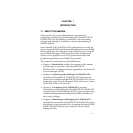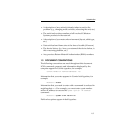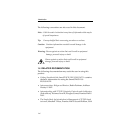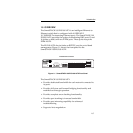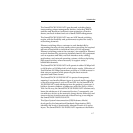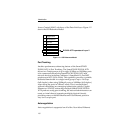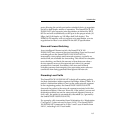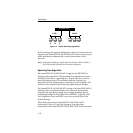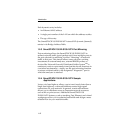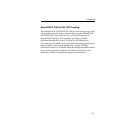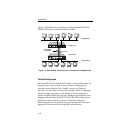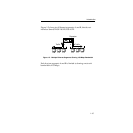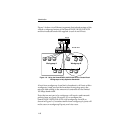
Introduction
1-9
ports allowing the switch port and an attached device to negotiate
for full or half-duplex modes of operation. The SmartSTACK 100
ELS100-16TX also supports auto-negotiation as defined by IEEE
802.3u and will automatically set the port to the proper mode (10
Mbps, half/full duplex or, 100 Mbps half/full duplex). The
EPIM100-FX interface will not support auto-negotiation, as auto
negotiation for fiber is not defined in the 802.3u specification.
Store and Forward Switching
As an intelligent Ethernet switch, the SmartSTACK 100
ELS100-16TX uses store and forward switching. Store and forward
switching allows the SmartSTACK 100 ELS100-16TX to
temporarily store packets until network resources, typically an
unused link, are available for forwarding. This allows for complete
error checking, and limits the amount of time between when a
device requests access to the network and when it is granted
permission to transmit. In addition, full store and forward
switching ensures data integrity, thus preventing network error
conditions from being generated throughout the network.
Discarding Local Traffic
The SmartSTACK 100 ELS100-16TX checks all incoming packets
for their destination address against the Bridge Address Table. If a
packet’s destination address is not on the same network segment
as the originating packet, the SmartSTACK 100 ELS100-16TX
forwards the packet to the network segment associated with that
destination address, if known. However, if the packet’s source and
destination address are on the same network segment, known as
local traffic
, the packet is automatically discarded (i.e., ignored by
the SmartSTACK 100 ELS100-16TX).
For example, a file transmitted from Workstation A to Workstation
C in Figure 1-3 does not need to leave LAN 1. The SmartSTACK
100 ELS100-16TX connected to LANs 1 and 2 sees all traffic from
LAN 1, including LAN 1 local traffic.



